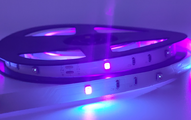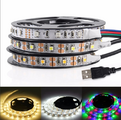Let you know about the driving power supply of LED strip lights
LED linear light manufacturers take you to understand the driving power supply of LED strip lights
LED is a semiconductor component that is sensitive to characteristics and has negative temperature characteristics. Therefore, it requires a stable operating state and protection during application, which gave rise to the concept of driving. The driver is the core component of the LED strip light and plays an important role in the work of the LED. LED strip light drivers are generally divided into two types: AC drivers and DC drivers.
Unlike ordinary lighting bulbs, LED strip lights can be directly connected to 220V AC power, so they have strict requirements on the driving power supply. Although there are also high-voltage LED strip lights that can be directly connected to 220V, we often use 5-24V in our daily life. Because it is a low-voltage drive, it requires the design of a complex conversion circuit, and must have LED strip lights of different specifications and different power adapters.
AC drives are divided into three circuit types: buck type, boost type, and inverter type according to the application. The difference between AC drives and DC drives not only requires rectification and filtering of the input AC power, but also the issue of separation and non-separation from the perspective of safety.

LED flexible strip light DC drivers can be divided into three types according to their functions and uses.
1. Inverter driver. A switching element high-frequency transformer is used to transmit energy from primary to secondary while performing voltage/voltage conversion to drive light-emitting diodes. The voltage at the output end of such a driver is not limited by the input voltage. It can be designed with any number of LED strips connected in series as needed. It is flexible in application and is suitable for situations where the supply voltage changes near the voltage drop of the load tube. It is also suitable for supply voltage and The difference in pressure drop between load tubes is large.
2. DC boost driver. Its basic principle is to work by combining switching elements and reactance elements to accumulate energy and boost the voltage to limit the flow. The conversion efficiency of the boost driver is also relatively high. Its significant advantage is that it will not damage the luminous tube when it fails. Boost drivers are only available if the voltage drop across the load tube is always higher than the supply voltage. When the voltage of the load tube drops below the power supply voltage, the driver loses control and a large current flows through the luminous tube, causing it to burn out.
3. DC buck driver. The basic principle is to combine the switching element and the reactance element to apply a voltage reduction limit to the external power supply, and then drive the light-emitting tube to operate. The series buck driver has a simple structure and high conversion efficiency. The main disadvantage of this driver is that when the main switching element is damaged, a large current will directly burn the light-emitting tube through the light-emitting tube. Obviously, this method cannot be used when the supply voltage is lower than the load tube.
When the number of LED strips used in DC low-voltage input is small, you can choose a buck driver or a boost driver, and you can try to choose a series or fewer parallel LED strips. When there are a large number of strip lights, you should choose a boost driver and try not to connect them in series or in parallel. LED strip light) driver is one of the core components of the overall strip light. If you choose a good driver, the luminous efficiency and lifespan of the strip light will be greatly improved, so friends must conduct detailed inspection and understanding when choosing and purchasing.





